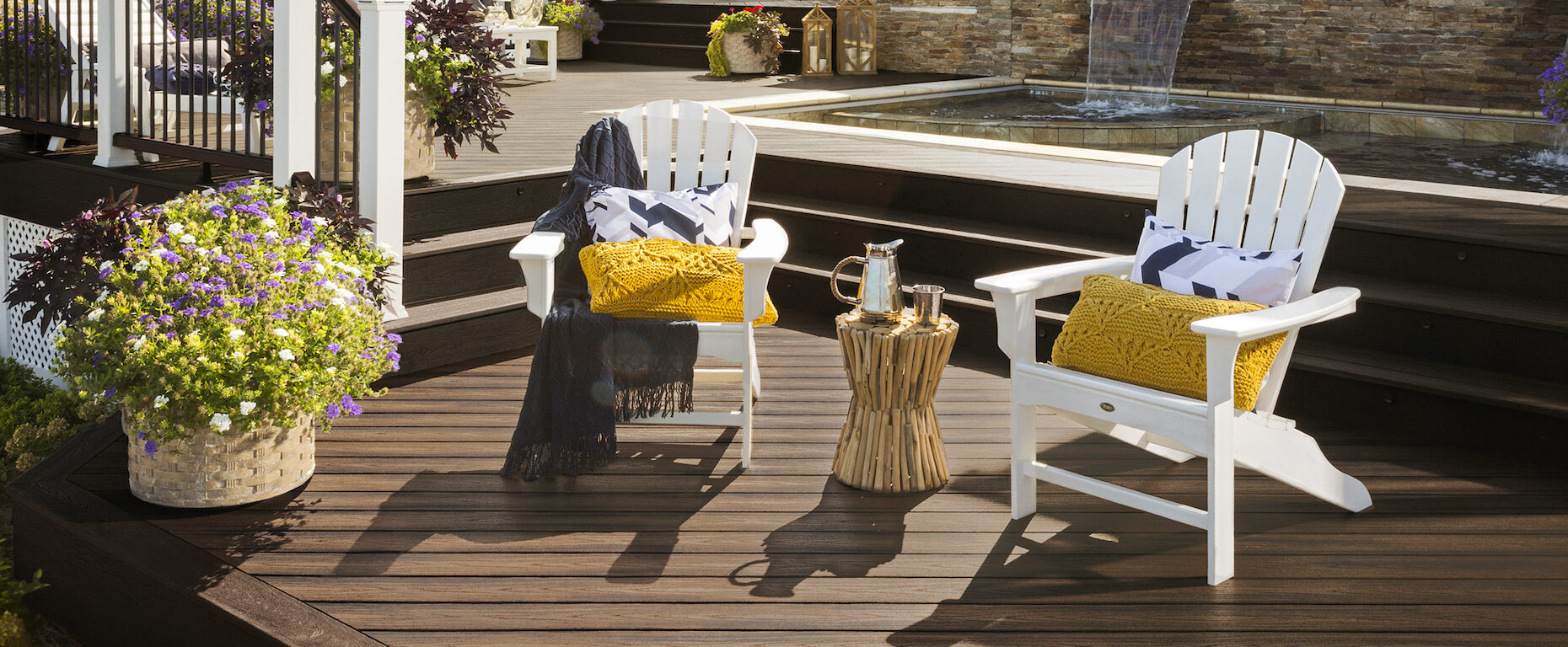Originally Published on January 27, 2020. Last Updated on July 11, 2023.
Is your deck decor looking sparse? Are you beginning to notice the unobstructed view directly into your kitchen more and more? Bring life and privacy to your space with a bit of plantscaping.
You may think you’re in for a challenge, but we’re here to take the guesswork out of this kind of yard work. We’ve prepared a variety of deck planter ideas, shopping suggestions, flora fashion advice, and more that you can use to become a seasoned plantscaper.
Jump to Section
What is Plantscaping?
Picking the Perfect Deck Planter
Selecting the Proper Potted Plants
Deck Planter Pairings
Deck Planter Ideas
Small Deck Plantscaping Tips
Deck Planter Care Tips
FAQs
What is Plantscaping?
Plantscaping—also called interior landscaping—is the craft of arranging, incorporating, and caring for container plants inside and in the immediate outdoor areas around a home or business. It differs from landscaping, which is about altering a piece of land to improve its appearance, value, and functionality.
“Potted plants” is the key term to remember in plantscaping. The vessel is just as important as the vegetation within as they’ll be exposed to the great outdoors.
Picking the Perfect Deck Planter
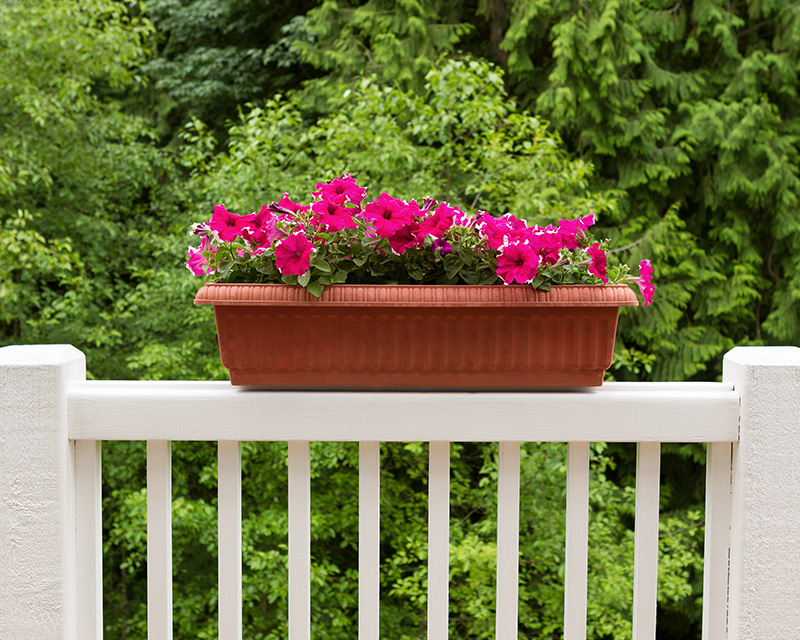
Ponder the following factors to help streamline your search for deck planter boxes.
- Available space: The amount of open and usable space on your deck will determine the size and quantity of planters to purchase. We highly recommend taking deck measurements before buying anything.
- Budget: Setting a budget helps manage expectations and prevents overspending.
- Architectural features: Pergolas, railings, built-in benches, and other features can impact the types of planters you can have.
- Utility: Think about your plantscaping goals and plan your purchases and layout around them.
- Materials: Look for planters built from durable materials that can withstand outdoor elements while supporting plant life.
Selecting the Proper Potted Plants
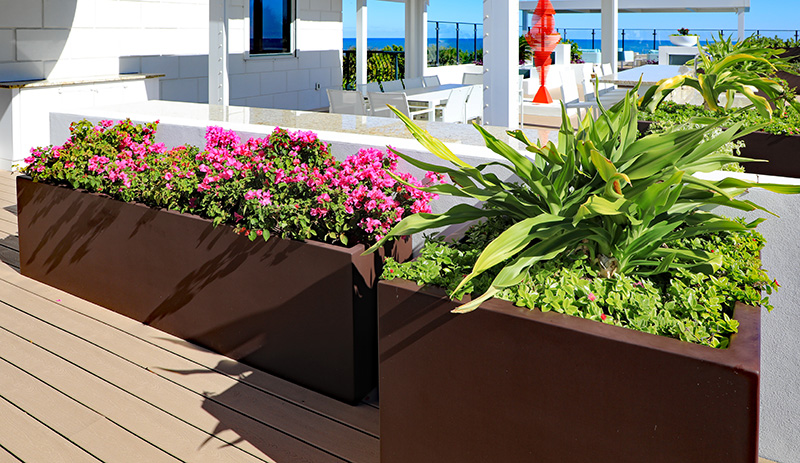
Keep these points in mind while searching for the perfect plants.
- Sun exposure: The amount of sunlight that shines on your deck, patio, or porch dictates the quality of life for your plants. If tall trees shroud your space, look for varieties that thrive in the shade. Pick foliage that needs full sun if your deck sees sunshine all day.
- Climate and hardiness zone: The best plants to use are those local to your region and hardiness zone.
- Maintenance level: How much work are you willing to put in to maintain your plantscaping? If your schedule leaves you with little free time, choose low-maintenance plants that don’t need constant attention.
- Aesthetic: Whether you’re going for a meadow-like feel or a tropical theme, there are plants out there that will blend beautifully with your preferred style.
- Size and growth habits: Do your research to find plants that won’t outgrow your pots. Some ornamental grasses start small but get HUGE as time passes, and Dracaena plants can grow up to 10 feet tall.
Deck Planter Pairings
Here’s a list of different types of plants and which containers they thrive in:
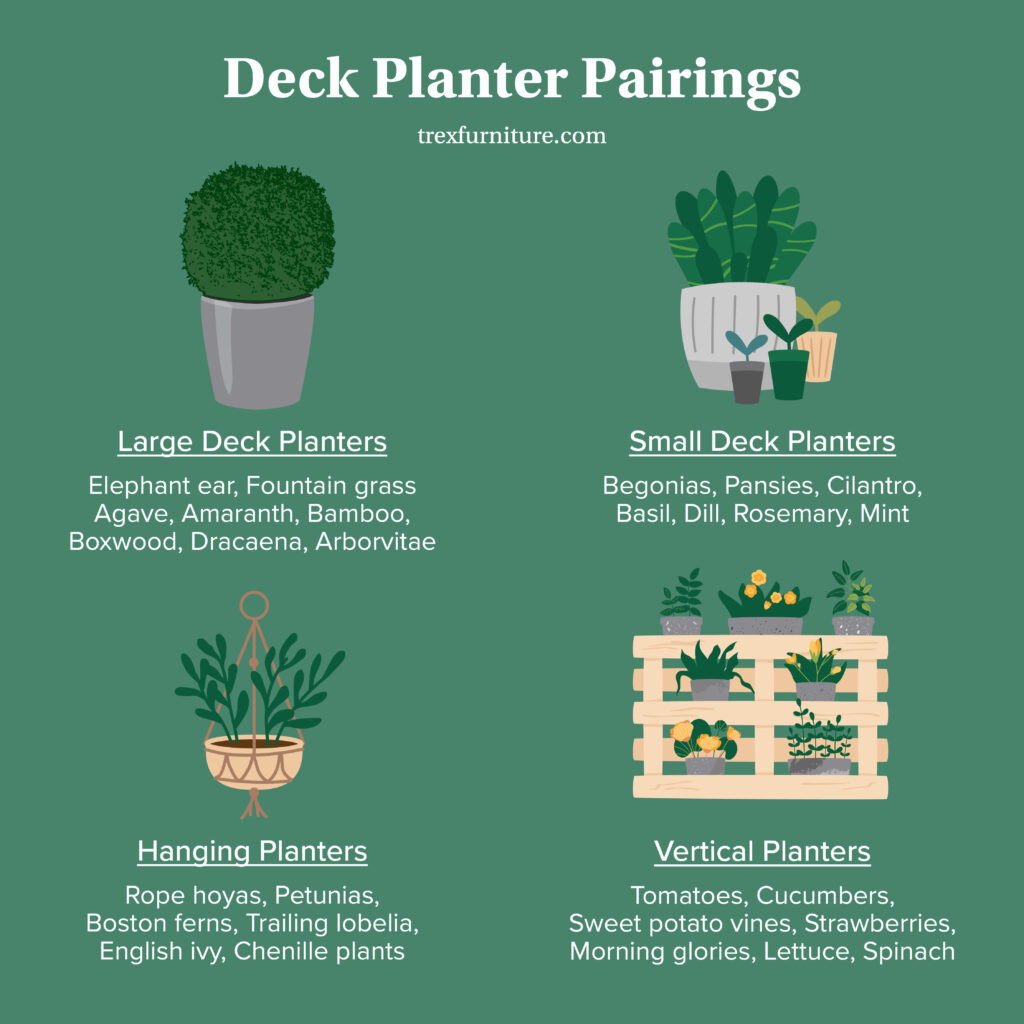
Deck Planter Ideas
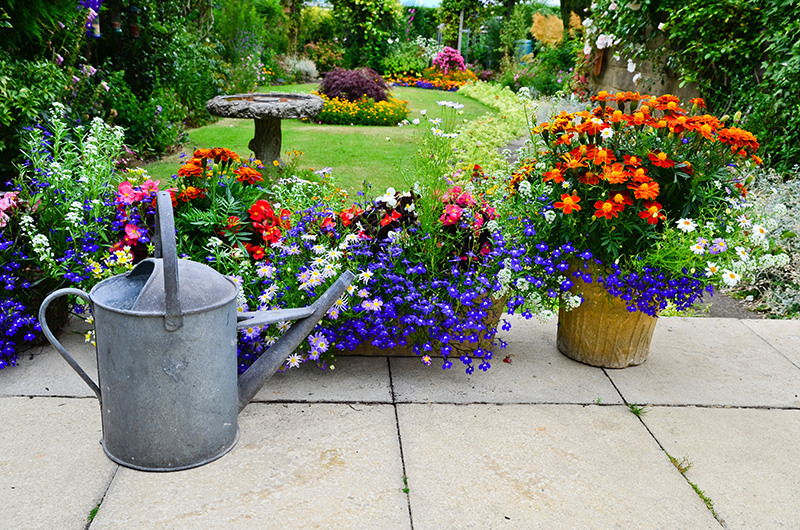
Here are some great ways to incorporate planters into any deck design.
For Covered Decks
Hanging Basket
Install eye hooks in the overhead joists or beams on your deck’s ceiling so you can put up hanging planters and take your plantscaping to new heights.
Trellis Planter Box
If a pergola or gazebo covers your deck, place a container garden with a trellis at one side and let climbing plants wind their way to the top.
For Deck Dining Spaces
Countertop Herb Garden
Style a small plant container on your outdoor kitchen counter so you can keep fresh herbs handy whenever you’re cooking alfresco.
Pest-Repellent Planters
Fill planter boxes with lavender, mint, and marigolds, and place them around the perimeter of your outdoor dining area to repel mosquitos and other annoying insects.
For Privacy
Living Wall
Vertical gardens are worth exploring if you want to add solitude to your outdoor space. Choose plants that produce thick and wide leaves to ensure full coverage, and make sure the garden is secured to an existing structure like a pergola, fence, or the side of your house.
DIY Pallet Planter
Here’s an inexpensive DIY project that will add privacy to your deck or large backyard. Build a wooden planter using old box pallets. Have one whole pallet make up the back portion to add height, and fashion a container for the front out of one or two other pallets that can house vining clematis or dracaena.
For Large Spaces
Space Dividers
Use rectangular planters or a row of pots to divide your spacious deck into separate areas for entertaining, relaxation, dining, etc.
Benches with Built-in Planets
For a multifunctional moment, try outdoor seating with planters built right in. These eye-catching designs are great for smaller spaces and for anyone who wants to get extra close to nature.
For Small Spaces
Railing Planters
Putting planters over your deck railing saves floor space and keeps flowers at easy-to-reach heights for watering and pruning.
Slimline Planters
Ideal for balconies and decks without railings, long and thin planter boxes save on floor space while still bringing in plenty of blooms.
Small Deck Plantscaping Tips
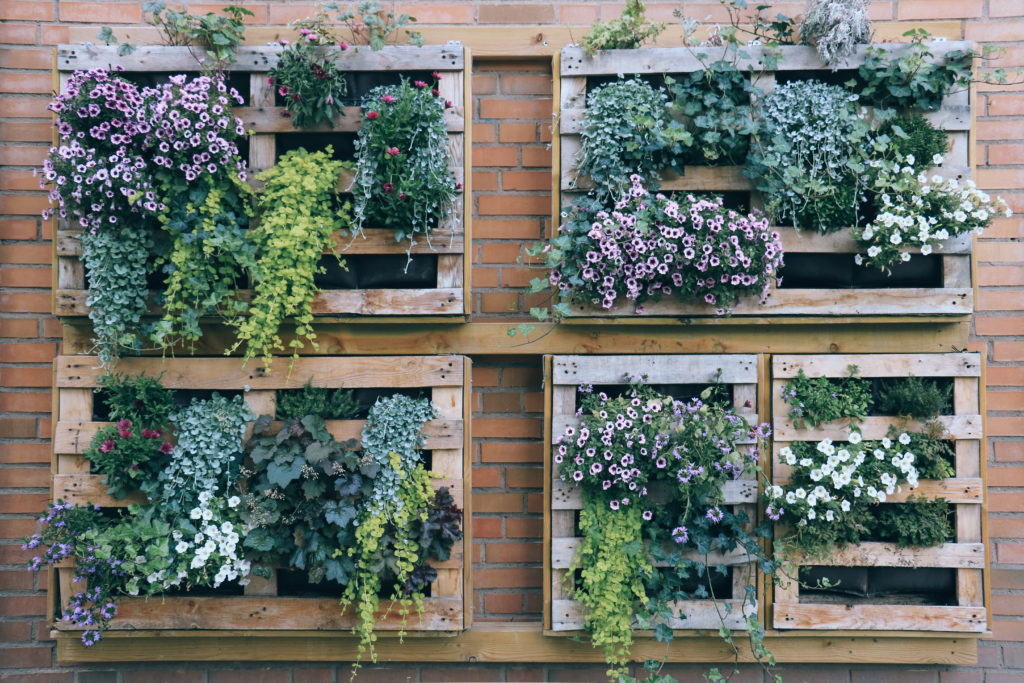
Here’s some extra insight on how to successfully plantscape when working with limited space.
- Grow up: Garden towers, balcony railing planters, and hanging baskets are great options for smaller decks. While they don’t take up much space, they go a long way in adding color and depth to your deck.
- Companion planting: This method is about grouping plants with similar sun, water, and soil needs. It’s convenient, saves space, and the right plant pairings will have enhanced growth and flavor.
- Use what you have: Instead of adding a trellis in front of your fence, train your acorn squash to climb up the pickets and posts. Or try turning one of the shelves on your multi-tier side table into a plant perch.
Prune your plants: Deadheading and cutting away dying leaves and branches not only encourages new growth but also keeps your plants at manageable sizes.
Deck Planter Care Tips
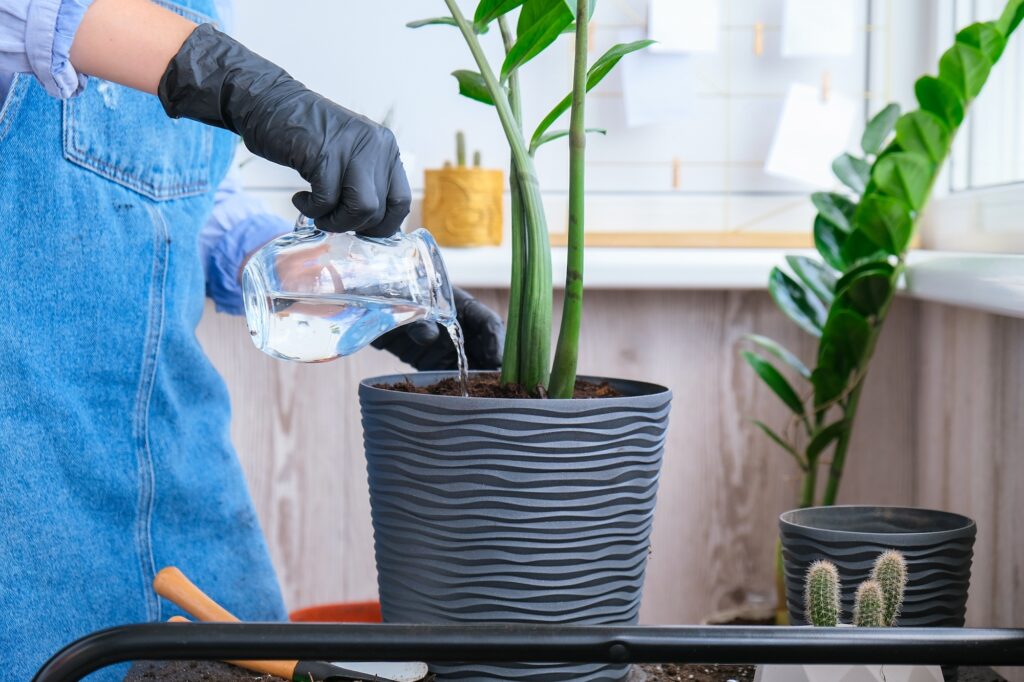
Follow these suggestions to keep your potted plants happy and healthy.
Watering
- Potted plants tend to need more water than in-ground foliage.
- To save water and ensure your plants have plenty of time to absorb it, water early in the morning before it gets too hot.
Fertilizer and Soil
- Select fertilizer formulated specifically for containers and your chosen plants.
- Use drainage-friendly potting soil.
Pruning
- Late winter or early spring are the best times to prune perennials before new growth starts.
- Deadhead flowers when the blooms begin fading.
- Cut the stems and branches halfway back when trimming leggy plants, and keep some leaves on.
Drainage
- If your deck planter doesn’t have drainage holes, drill a few in the bottom.
- Smaller pots drain faster than larger planters, so if you want to water less frequently, opt for bigger containers.
- Rocks do not improve drainage, so keep them out of your deck planters.
FAQs
What do you put under a planter to protect a deck?
Protect your deck by elevating planters on stands, risers, or pot feet. This puts space between planters and decking, allowing air to flow through freely and keep your decking dry.
Is it okay to put plant pots on decking?
It’s recommended that you put some sort of barrier between plant pots and decking to prevent stains and moisture buildup.
How do you arrange planters on a deck?
Arrange your deck planters in a group with taller foliage in the back. If you have a mix of partial-shade and full-sun plants, position shade-seeking blooms behind or below sun-loving leafage to give them a break from the sunlight.

